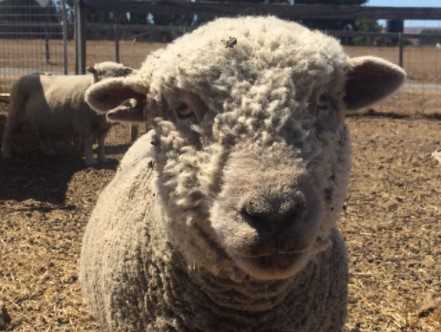By Alda Pires
The urbanization of society has long since pushed people far away from producing their own agricultural products and into relying on imported goods from rural areas. However, there is an increasing trend in recent years to have livestock and poultry in urban and peri-urban areas for reasons such as producing their own food for both themselves and the community as well as keeping farm animals as pets. Knowledge on caring for farm animals is often not as intuitive and requires specific husbandry knowledge versus companion animals like cats and dogs. There are risks of disease transmission from animals to humans, called zoonoses, that can spread from animal to farmer as well as community during contact with backyard farm animals. For that reason, it is important to understand those risks and have easy access to resources that can assist owners in good husbandry practices and prevent spread of diseases between animals and people.

How I can keep my animals healthy? The first step to maintaining healthy animals is to practice good biosecurity and hygiene practices. This includes purchasing new animals from certified sources and knowing the herd/ flock status of the sources and health status. Another important practice the separation of the new animals and your current ones, there would ideally be a 14-30 day isolation period to prevent the transmission of diseases between resident animals and new animals. It is recommended to make sure livestock have regular vaccinations, routine veterinary care, and are closely monitored by owners for signs of illness. If signs of illness are detected, the separation of healthy animals from sick animals is crucial in stopping the further spread of diseases.

Having good biosecurity practices are crucial to maintaining healthy animals, not only by introducing new animals but also to prevent the transmission of disease between animals on the farm/herd, wildlife animals, and avoiding the contamination of the environment. Environment such as soil, facilities, and fomites (inanimate objects to carry a pathogen from one susceptible animal to another) can be a source of harmful bacteria and viruses. Cleaning a good hygiene of animal facilities and equipment is also necessary for preventing the inception of disease and possible spread.
What practices can improve on small-scale and backyard livestock and poultry? In a recent study (Pires et al, 2019) in four western states in the US, 83.8% of small-scale and backyard livestock and poultry owners reported that they isolated sick animals from healthy ones and 76.6% kept newly purchased animals in quarantine. Other biosecurity practices were reported at a lower rate, such as the quarantine of returning (e.g., from fairs, shows) animals (49%), rodent/pest control (57.3%), wearing dedicated clothes when handling sick animals (49.5%), avoiding livestock contact with wildlife (50.7%) or limiting visitors (22.5%) (Pires et al, 2018).

Where to find information? Veterinarians that specialize in animal husbandry, urban agriculture, poultry, and livestock are often found in rural areas and may not be accessible. Ultimately, it is the responsibility of the owners to provide good care of their animals and seek reputable information sources, in order to keep both humans and animals healthy. The University of California Agriculture and Natural Resources, University of California School of Veterinary Medicine are great resources for backyard livestock and poultry owners maintaining a healthy backyard farm. Several resources can be found at the Small Scale & Urban Agriculture UC ANR, the Urban Agriculture UC ANR, and the Poultry CE webpages.
Summary. Backyard livestock and poultry owners should do their best to prevent contamination and disease spread. Purchasing the animals from reputable sources, maintaining a clean space for the animals, separating sick from health animals and proper sanitation efforts all play a collaborative part in the prevention of diseases and promotion of animal health and public health. Many sources such as published through different outreach outlets and are available online as well as veterinarians exist for how to properly maintain a backyard farm. It is important that backyard owners be aware and utilize the information out there and do what is best for themselves as well as the population. For more information, come back for more as this is the first of a series of articles that will cover backyard livestock and poultry.
- Pires, Alda F. A., et al. “Assessment of Veterinarians' Engagement with Backyard Poultry and Small-Scale Livestock Operations in Four Western States.” Journal of the American Veterinary Medical Association, vol. 257, no. 2, 2020, pp. 196–209., doi:10.2460/javma.257.2.196.
- Pires, Alda F. A., et al. “Small-Scale and Backyard Livestock Owners Needs Assessment in the Western United States.” Plos One, vol. 14, no. 2, 2019, doi:10.1371/journal.pone.0212372.